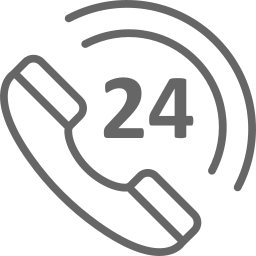Table of Contents
Assessment Task 2
References
Reflection
This particular essay will reflect the ethical, legal, as well as professional frameworks that underpin professional nursing in Australia. The case study will be subjected in terms of the Australian Charter of Health Care Rights, Consent, and duty of care and the breach of duty associated with care. Medical negligence in context to the case study will be deciphered in effective terms. Four main principles in bioethical terms will also be discussed. The case study is about Doris, an old female (79 years) who lived with her husband (88 years old). In this particular case, it has been conferred that Doris was ill-treated by the doctors who caused her serious pain.
The patient’s rights as per the Australian health system are described by “The Australian Charter”. A safe, as well as a high-quality health system, is instrumental in helping everyone to work collectively. Providing health care services by creating an understanding of the patient's rights while receiving health care are allowed by the Charter to the health care users, including consumers as well as their families. Everyone achieves the best in class outcomes by creating a partnership amongst health care users, as well as the service providers. In context to human rights charter, everyone has the right to enjoy the best possible physical as well as mental health care standard. In the context of the Australian Charter of Healthcare, everyone has the right to access health care in effective terms (health.vic.gov.au, 2017). Australia being a society made up of different socio-economic, and culturally diverse people, the Charter is instrumental in acknowledging those differences. In this case, Doris along with Peter, the rights of both were breached as per the Australian Charter of Healthcare Rights. The care as provided to Doris was not at all safe. It can be conferred by the act of the surgeon who left Doris to be operated by a junior surgeon. The orthopedic surgeon decided to take the afternoon off duty to play golf as well as delegated Doris's operation to a junior doctor to perform alone. Due to his inexperience, the junior doctor significantly injured Doris's hip and she suffered continual pain as well as decreased mobility following the procedure (Safetyandquality.gov.au, 2019).
The medical practitioner performing a medical treatment as per the Mental Health Act 2014 possesses legal responsibility for ensuring proper information toward the patient along with valid consent. Liability Protection tends to offer the patient an option to change the medical practitioners. The person responsible for obtaining healthcare user's consent should explain the whereabouts. The medical practitioner’s duty mentioned by in gaining Consent (Australian terms) needs to be followed by all health care practitioners while providing medical treatment as well as or health care services to the health care users (health.act.gov.au, 2020).
Also, related health professionals participate in the treatment or care of the patient under the supervision of a treating physician. When a physician delegates responsibility to another physician for obtaining consent, he or she should ensure that the person understands both the treatment and the consent. The treatment process can be put into question if a patient does not fully understand the recognition, consequences, and risks of the requested treatment, alternative therapies and treatments. Health care users should not seek the permission of the doctor with whom they have agreed if the results of the treatment are not effective. In emergencies where the patient cannot consent and no patient representative is available, the treating physician should advise the patient about the risks of each of the components associated with the treatment (Lamont, Stewart & Chiarella, 2019).
But in the case, of Doris what exactly happens is that the doctor did not explain the proposed procedure, along with that he just asked Peter to sign the blank consent for Doris. It is something that is not valid of how Consent is given. Peter told the health care professional about his memory issues to which the health care professional had concerns about Peters' ability to understand the proposed operative procedure as well as to legally provide consent meant for Doris and eventually contact the surgeon. The surgeon replied that as the consent form had been signed that was sufficient and the surgery would proceed.
Under the Mental Health Act 2014, it can be understood that certain attributes are needed to be maintained and looked for (health.vic.gov.au, 2020). To give consent, decision-making capacity must be subjected by the person (who gives the consent): A person has decision-making capacity, to a specific extent as well as the person must be capable of giving consent. Medical treatment decision can be given if they understand the information in regards to the decisions made. Understand along with appreciating the risks as well as the benefits of the choices.
Since Peter had problems with his memory alongside it, the health care professional addressed it to the professional's Unit Manager who told her to document them in Doris's medical chart. Consent of prescribing medical treatment for a mentally incapacitated person is provided by the “The Guardianship and Administration Act 1993”. It refers to the inability of healthcare user to understand, look after their health, and manage their affairs that ensure safety as well as their welfare due to: a) Damage or illness, leading to disorder, imperfection or delayed development, at times impairment leading to the brain or mind functional deterioration; b) Physical condition or illness due to which a patient is unable to communicate as per their wish and express their intentions in whatsoever manner (Chesterman, 2018). There are mainly three types of consent in Australian terms namely implied consent, written consent and verbal consent (health.act.gov.au, 2020).
The medical profession in Australia refers to a profession where the law is considered everyone's responsibility. The obligation to care implies that if a person is treated, the person receiving the treatment has a legal obligation not to get reasonably harmed. If such myopic damage occurs, the person who provided the treatment may be liable for medical malpractice. Negligence can amount to the loss of another person's property, assets, or interests under the law. In cases where the treatment is objectionable, it can usually be a physical injury or damage. Stating the case of Doris it can be seen that it is a case of medical negligence by the health care specialists (Bevan et al., 2019).
Duty of Care: Diagnosis, treatment, or other treatment method provided by specialists will consider whether it is consistent with acceptable treatment practices. On the other hand, if there is an injury or damage, it is automatically assumed that the health professional was negligent, so no one should be blamed. If it is due to medical negligence, the professional seems to have acted in most cases as per a Lawsuit. It occurs when the diagnosis, treatment, or procedure falls below the criteria applicable to certain health workers who have violated the obligation to care. In this case, the duty of care was very important; it is meant for Doris as she is an old woman with a serious hip injury (Andersons.com.au, 2018).
Breach of Duty of care: Duty of Care is based on the principle that a person must take reasonable care to avoid actions or errors that may be reasonably harmful to any of them. If they do not, a physician accused of negligence may not be liable for civil action. If the physician's work is unlawfully neglected in the patient's life and history, the criminal court may charge him with criminal negligence or murder (McMillan, 2019). When considering breach of duty, the common law has been modified in some States by the statutory "peer professional opinion defence." The wording of the defence varies State by State. In NSW the defence is "did the professional act in a manner that (at the time the service was provided) was widely accepted in Australia by peer professional opinion as a competent professional practice?" There is also a statutory exception to the defence- is the treatment irrational.
In the case of Doris, it is very well established that the surgeon has conferred a breach in the duty of care by handing over Doris to a junior surgeon who further depleted her condition. The information above provides a basic overview of the law of medical negligence in Australia, from the perspective of the common law. For instance, in this case, a breach in context to the duty of care has taken place and the situation can be dragged to the court of law (Hawkins, 2018). Considering whether the healthcare specialist has violated the obligation to care, the court can analyze the criteria that can be expected from the person treating the defendant's condition. In this case, the expert witnesses (other physicians with field experience) can be asked to give their opinion on whether the Q&A measures were considered reasonable in this situation to help the court assess the matter (Morris, Chawla & Francis, 2019). It is impossible to determine in detail a reasonable standard of care that covers all possible health conditions in a single detailed statement. For this case, the nurse can be a witness as she heard Peter and his problems. She also reported to her head about this issue.
Harm/Damages: A plaintiff must be able to play his or her role with compensation, as well as feel the damage caused by the defendant's actions or omissions. The amount of payment granted as per the law results from the action of negligence referred to as "damages" (healthlawcentral.com, 2019). In this case, it can be stated that the damage has been done to Doris's health condition. Medical expenses have also been one of the major damage. Damages due to pain or physical suffering remain high for Doris as the junior surgeon has depleted her condition further.
Bioethics is used to focus on Doris's objective assessment of moral values, violation of his will, as well as the ethical issues of medical practitioners' facilities. It consolidates his rights as a patient by helping to establish a common foundation based on the principle of equal and fair consideration in all aspects of Doris's medical rights. The patient party can ask questions about healthcare practices and resolve liability manifested by healthcare organizations. Fight the biological dilemma that arises in neglecting responsibility in the case of biomedical challenges.
This principle has assisted Doris's family members in resolving misinterpretations and assumptions about the delivery of healthcare in the context of the case study.
The four main bioethical related principles in Doris's case of medical negligence include Autonomy. It is relative to Doris as a healthcare user and addresses his requirements while making health care decisions regarding the procedures. Consequently, the process of decision-making ought to be coercion free helping Doris to undertake informed decision. Healthcare personnel should understand the risks and procedure benefits along with the consideration of failure probability. But in the case of Doris nothing of this sort happened, the doctor subjected Peter to sign the consent without even making him understand the elements in it (Acfid.as.au, 2017). Next comes the aspect of ‘Justice,’ the new or experimental treatment benefits must be distributed equally amongst all the societal groups. It requires procedures that are considered fair in maintaining the existing knowledge of laws to all involved health care facilitators.
In assessing justice, providers of healthcare must consider main areas meant for Doris’s rights toward availing of fair resources distribution, obligations as well as potential conflicts with established law. In the case of Doris, fair distribution was not done at all (Online.sju.edu, 2020). Beneficence is intended to improve the requirements of the procedure and is meant for the patients involved. It provides the right to Doris and his family to fight for their profit. In this case, Doris was neglected by health professionals who made her condition worse (Acfid.as.au, 2017). Last is the ‘Non-malfeasance’ which refers to a process that must not harm the patient’s interest. However, since the outcomes of a medical procedure are uncertain this reduces the success rate of assisted medical technology, but without proper consent, as seen in Doris’s case it can harm the healthcare user's emotional state. In this case, it is difficult and hampered the principle ethics for physicians when it is not applied successfully (Online.sju.edu, 2020).
It will be good to conclude this essay reflects the failures of ethical, legal, as well as professional frameworks in context to a patient named Doris. It has underpinned the professional dilemmas related to the Australian health care sector. In context to the case study the Australian Charter of Health Care Rights, along with the professional healthcare consents was not abided by. Also maintaining patient’s confidentiality along with her privacy was breached. Even the 'Duty of care' was violated when the patient was unable to sign the consent form. Her son Peter who was not fit for giving the consent was deliberately contacted and was forced to sign.
Now in context to the case study certain elements required for taking legal action due to medical negligence were discussed instead of 4 main bioethical principles. The patients suffering was of main concern in this paper due to the breach of ethical roles along with the medical responsibilities of professional health care professionals was highlighted. No proper response toward the criticality of the incidents considering all health care ethics breaches in the system was underpinned. Achieving the healthcare rights Charter needs to be further recognized by people receiving care as well as people who are providing care. All these rights are considered essential everywhere while catering to high-quality safe health care practices. A physician cannot be legally liable if he/she is negligent, but that does not mean they can harm the patient's interest.
Acfid.as.au (2017), Principles and Guidelines for ethical research and evaluation in development,
Andersons.com.au (2018), Duty of care and your medical treatment, from: http://www.andersons.com.au/lawtalk/2018/january/medical-negligence-duty-of-care/ [Retrieved On: 12th March 2020]
Bevan, R., Torrisi, A., Bollegala, D., Coenen, F., & Atkinson, K. (2019). Extracting supporting evidence from medical negligence claim texts. In Proceedings of the 4th International Workshop on Knowledge Discovery in Healthcare Data, KDH (Vol. 19), from: https://cgi.csc.liv.ac.uk/~frans/PostScriptFiles/kdh_Bevan_2019.pdf [Retrieved On: 12th March 2020]
Chesterman, J. (2018). Adult guardianship and its alternatives in Australia. Critical Perspectives on Coercive Interventions: Law, Medicine and Society, 180,
Hawkins, D. (2018). Breach of Duty of Care. Wisconsin Law Journal, from: https://search.proquest.com/openview/1738d78bc1d1c39ebfa8623a35c592ca/1?cbl=2026554&pq-origsite=gscholar [Retrieved On: 12th March 2020]
health.act.gov.au (2020), Informed consent, from: https://health.act.gov.au/about-our-health-system/consumer-involvement/informed-consent [Retrieved On: 12th March 2020]
health.vic.gov.au (2017), from: https://www2.health.vic.gov.au/about/participation-and-communication/australian-charter-healthcare-rights [Retrieved On: 12th March 2020]
health.vic.gov.au (2020), Australian Charter of Healthcare Rights, from: https://www2.health.vic.gov.au/mental-health/practice-and-service-quality/mental-health-act-2014-handbook/recovery-and-supported-decision-making/informed-consent [Retrieved On: 12th March 2020]
Healthlawcentral.com (2019), Medical Negligence, from: http://www.healthlawcentral.com/medical-negligence/[Retrieved On: 12th March 2020]
Lamont, S., Stewart, C., & Chiarella, M. (2019). Capacity and consent: knowledge and practice of legal and healthcare standards. Nursing ethics, 26(1), 71-83,
McMillan, J. (2019). Clinical ethics and the duty of care, from: https://jme.bmj.com/content/medethics/45/6/355.full.pdf [Retrieved On: 12th March 2020]
Morris, C., Chawla, G., & Francis, T. (2019). Clinical negligence: duty and breach. British dental journal, 226(9), 647-648, from: https://www.nature.com/articles/s41415-019-0312-9 [Retrieved On: 12th March 2020]
Online.sju.edu (2020), How the Four Principles of Health Care Ethics Improve Patient Care, from: https://online.sju.edu/graduate/masters-health-administration/resources/articles/four-principles-of-health-care-ethics-improve-patient-care [Retrieved On: 12th March 2020]
Safetyandquality.gov.au (2019), Australian Charter of Healthcare Rights, from: https://www.safetyandquality.gov.au/australian-charter-healthcare-rights [Retrieved On: 12th March 2020]
After checking the plagiarism report I saw that my similarity index showed green color. I did not make a lot of changes in the body of the essay but I made a few changes regarding the references. I always find referencing very much tricky so I always double-check them. In this case, I found that references were not positioned exactly where I would like them to so after viewing the plagiarism report I made several changes. The drafting process also had certain issues which I had fixed after looking at the report.
Remember, at the center of any academic work, lies clarity and evidence. Should you need further assistance, do look up to our Nursing Assignment Help
You Might Also Like
What are the 6 C's of the nursing poster
How To Write A Nursing Assignment Conclusion

Get 24x7 instant assistance whenever you need.

Get affordable prices for your every assignment.

Assure you to deliver the assignment before the deadline

Get Plagiarism and AI content free Assignment

Get direct communication with experts immediately.
Secure Your Assignments
Just $10
Pay the rest on delivery*

It's Time To Find The Right Expert to Prepare Your Assignment!
Do not let assignment submission deadlines stress you out. Explore our professional assignment writing services with competitive rates today!
Secure Your Assignment!